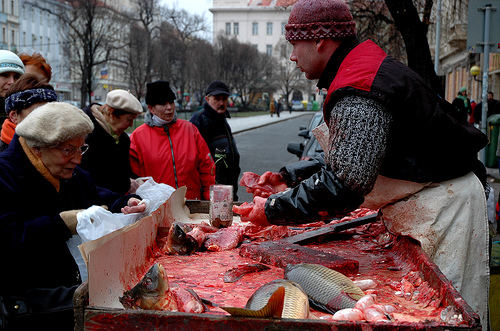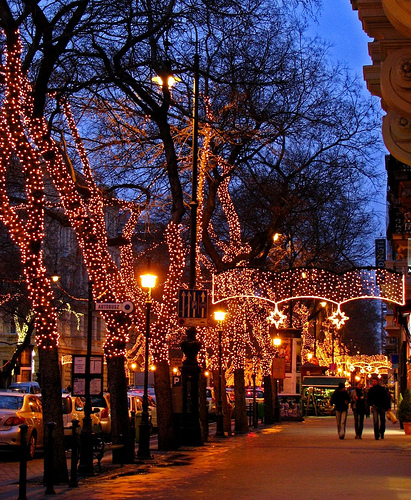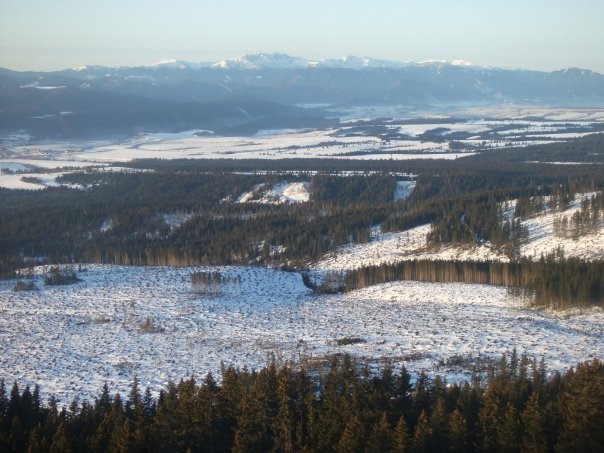Christmas Customs in Central/Eastern Europe
Central Eastern Europe has some interesting Christmas customs. Many of these traditions have survived in spite of Soviet occupation for so many decades, when religious practices were banned. There are some similarities with traditional dishes among citizens of this region in the world.
Czech Republic

In the Czech Republic, the common Christmas dish is carp, a type of fish. This is traditional; many Czechs think that carp tastes bad and resort to other food, but this is still part of their culture. Nevertheless, some people still prepare this dish. Sometimes, but not usually, they will keep the carp in the bathtub for a couple days, and maybe put in another carp friend so it doesn’t get lonely. They might release the friend carp into the river, in which it would die, as it’s a lake fish.
Click here to watch a video on buying Czech carp on the streets.
Anyway, Czechs will often place a bowl of garlic under the dinner table of Christmas Eve to guard against evil spirits. Before they start Christmas dinner, the father usually dips bread into honey and passes it out to everyone until they begin on their meal. Some Czechs begin their Christmas events on December 4, for the feast of St Barbara. Czechs usually aren’t super religious, the Christmas holiday is more about doing stuff with the family.
Hungary

Christmas season starts in Hungary on the first Sunday of Advent. Hungarians light candles and place wreaths up at work, school and home.
During Christmas season, boys often go around to different houses to display a plaque that has the Holy Family printed on it. They sing songs and recite poems when they present it. On Christmas Eve, Hungarians bring their Christmas trees into the house, and have families decorate it. On Christmas, they eat fish soup and Beiglie, soft cookies with walnuts and poppy seeds.
If you go to Budapest around on Christmas Eve, it’s very eerie. The city is dustily covered in snow, very cold, and everything is closed!
Ukraine

Christmas in the Ukraine is called “the Nativity.” Ukranians give presents on St Nicolas Day in the Orthodox religion, December 23rd. Traditionally, fathers would buy didukh, which is a sheaf of wheat, and tie it in the middle with ribbons, and bring that home.
Croatia
In Croatia, people often start celebrating on December 13th by planting wheat grain in small dishes. Then they grow into fresh shoots a few inches tall around Christmas Eve. They place a candle by these plants, and this ensemble is used as a Christmas decoration. A common Christmas dish in Croatia is stuffed cabbage. Croatians like to decorate Christmas trees with ornaments and candles, as well as fruit and nuts.
Lithuania
Lithuanian Christmas is similar to Polish Christmas.
One unique custom is that Lithuanians serve a twelve course dinner before going to Midnight Mass, which includes beetroot soup and dumplings. They also often serve carp in jelly, and then a hot fish dish later on in the night. Lithuanians enjoy pierogis, which are dumplings with mushrooms or cabbage, and then kompot, which is a stewed beverage that has fruits, poppy seeds and honey. Kompot is served with various cakes for dessert. During Christmas day, Lithuanians eat bigos, which is a hearty stew that has cabbage, pork, sausage, mushrooms and herbs. Sometimes it has vodka cooked into it, and families have their own variations.
Slovakia

Slovaks are into wood carving during Christmas. They also go to church, and then have dinner with sauerkraut soup and fish, and potato salad. The traditional Christmas dessert in Slovakia is Loke, which has raisins and poppy seeds, along with cakes, fruits and nuts. People often sing Christmas carols in a circle as a family.
Poland

Poland is a very religiously Catholic place, so Christmas is a religious holiday. They start preparing for Christmas days before the actual holiday. One supersticion is that if a house is dirty on Christmas Eve, that means it will remain dirty all year. A few days before Christmas, you’ll see a lot of Polish women cleaning out their homes.
The present holiday is celebrated on December 6th, after St Nicolas. Christmas day proper is called the “first holiday,” and Poles celebrate with their families.
Christmas Eve is called “Wigilia,” and hosts the most important meal of the year. This meal traditionally refrians from using meat. Some common food during this feast include poppy seed cake, beetroot soup and prune dumplings. People think that that this night sets the tone for the rest of the year, so they constrict themselves from fighting with anyone.
Poles like to see snow on Christmas, and it’s a cold place, so this usually happens. In the countryside, farmers often splash holy water onto their fields and place straw crosses on the four corners. In the home, they place straw under white tablecloth and mistletoe over the door frame.

excellent alot of really cool information, traditions and culture….this kind of insight makes the mc donalds culture mentality more balanced
For me it is interesting how close neighbors have different customs although they celebrate same holidays.. By the way.. nice post, many European countries included.
Christmas customs differ from one place to another. The few customs displayed and shared in this site are very interesting. Let’s just enjoy the spirit of Christmas and have fun with our loved ones. Chill with specialty tea .